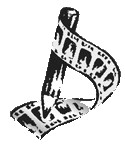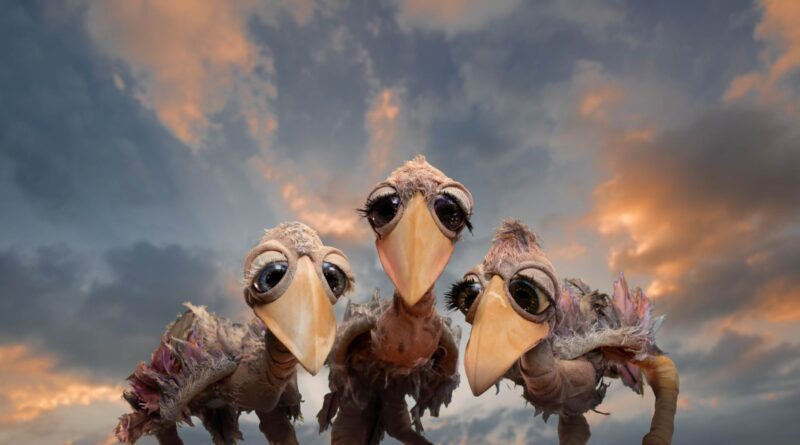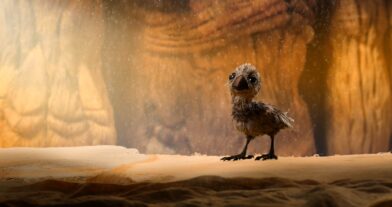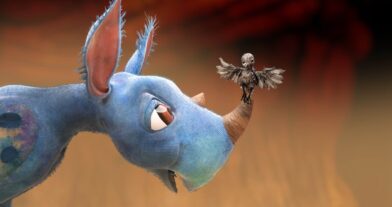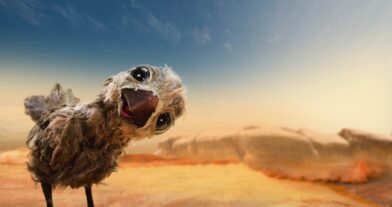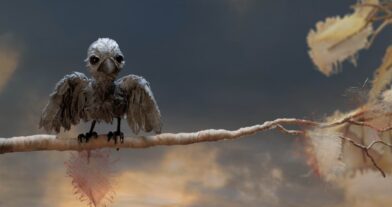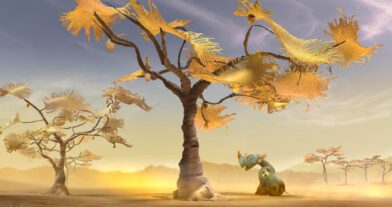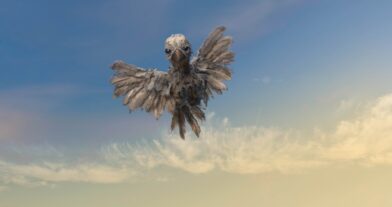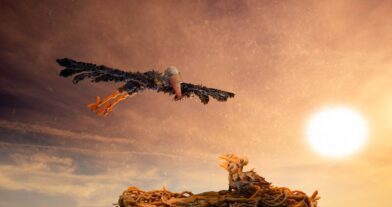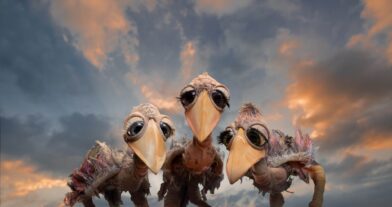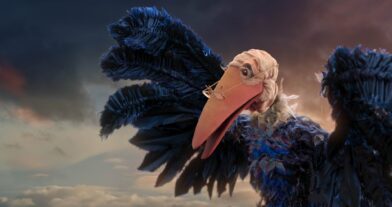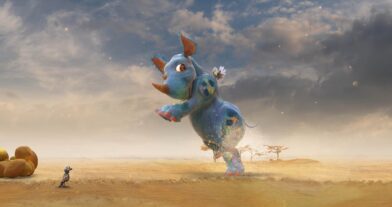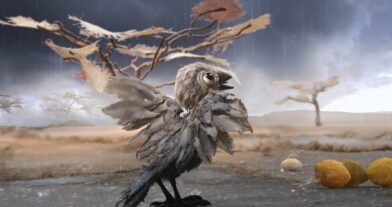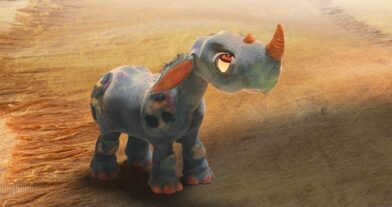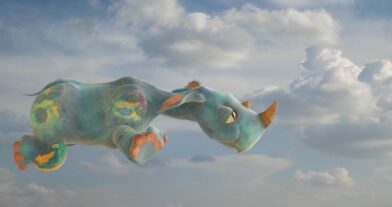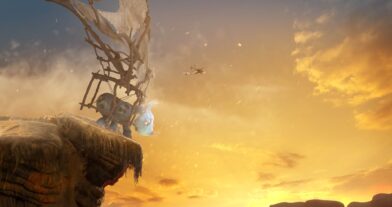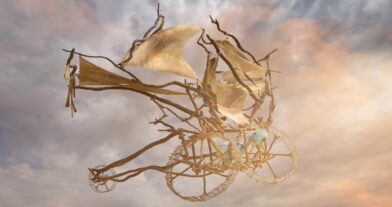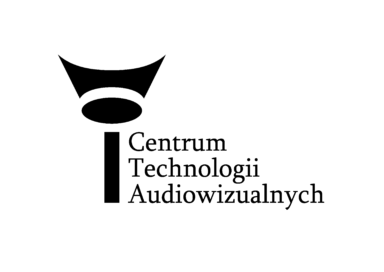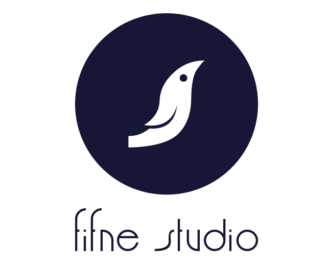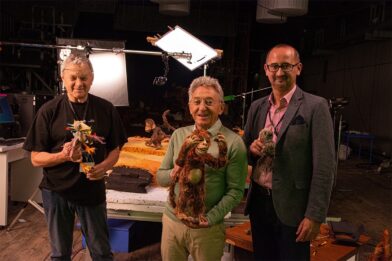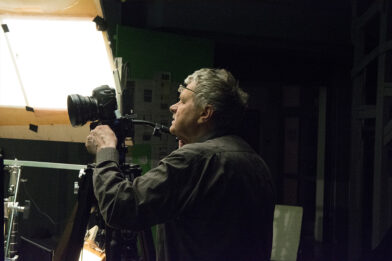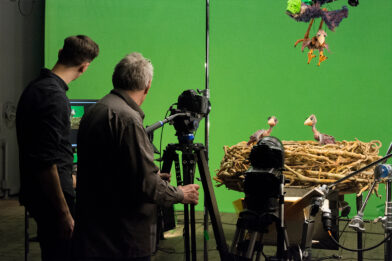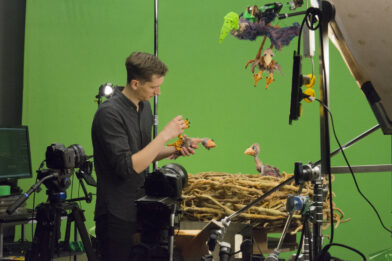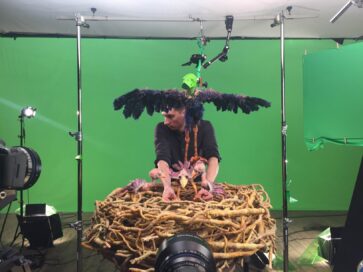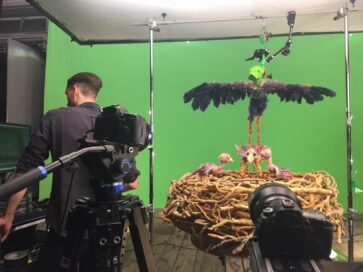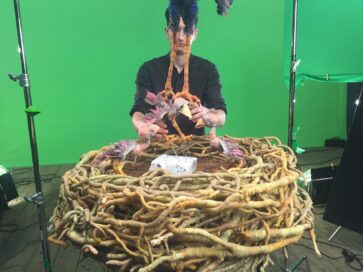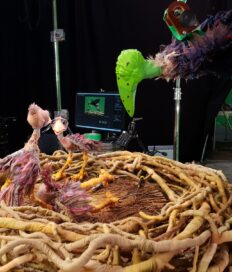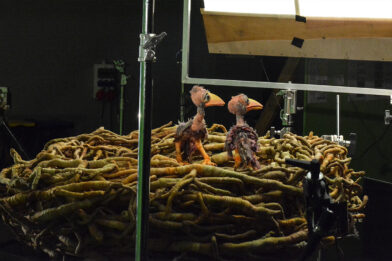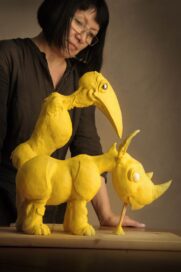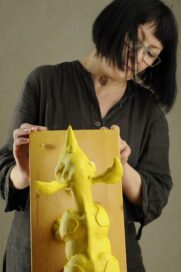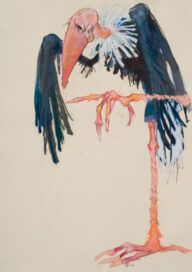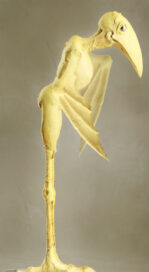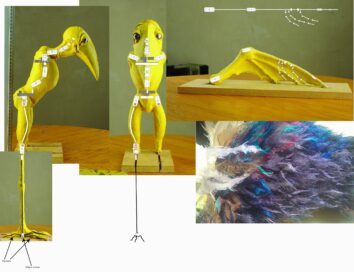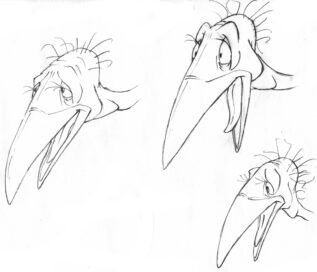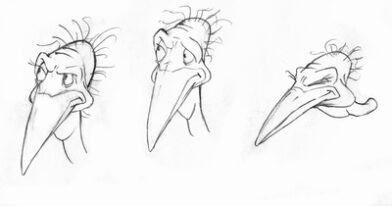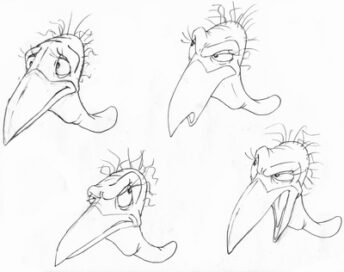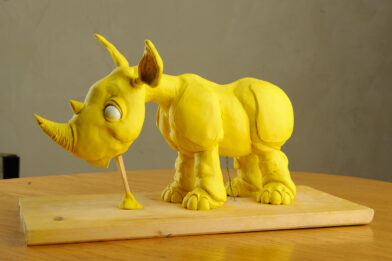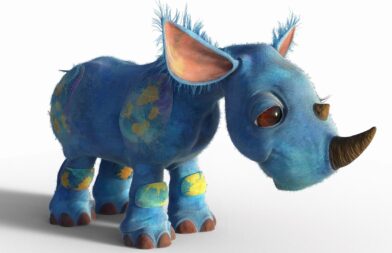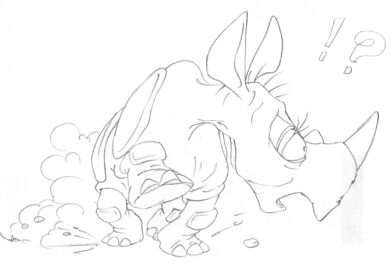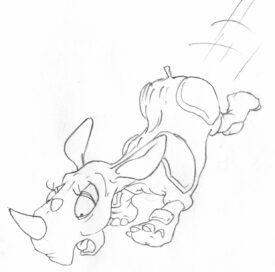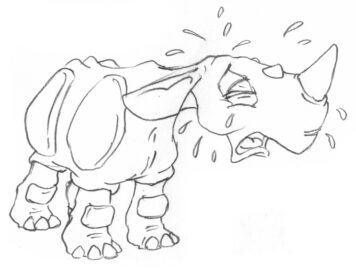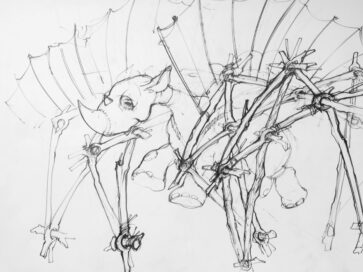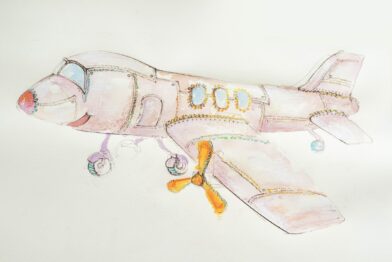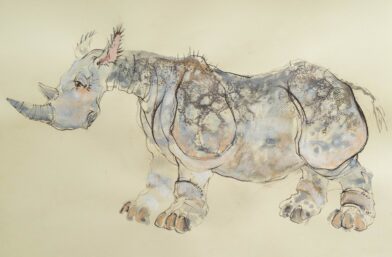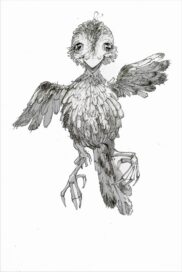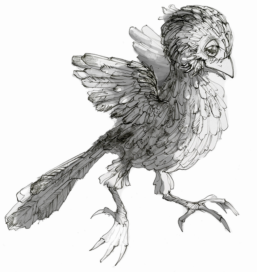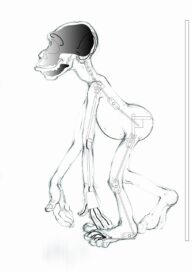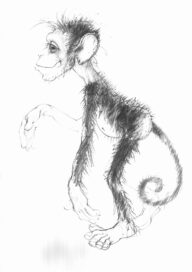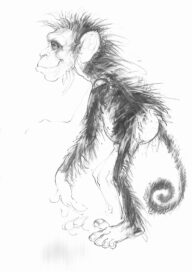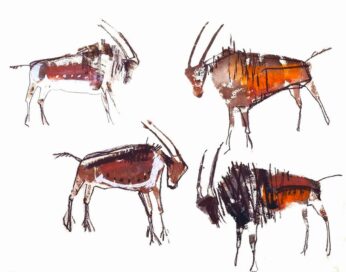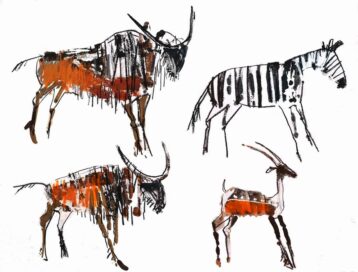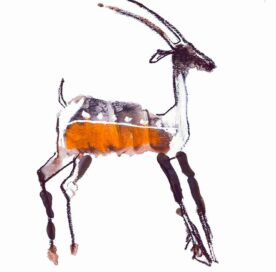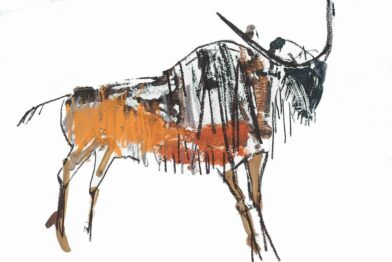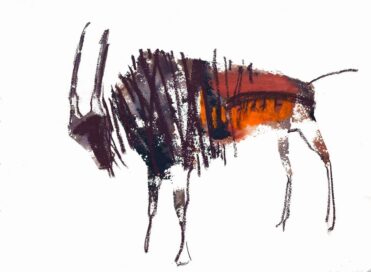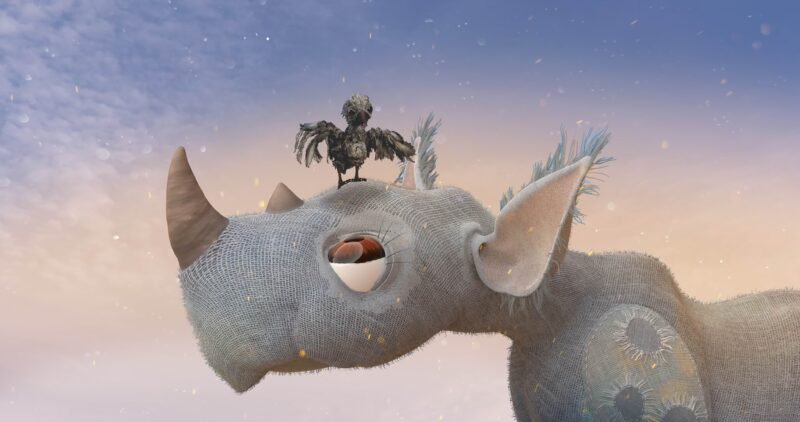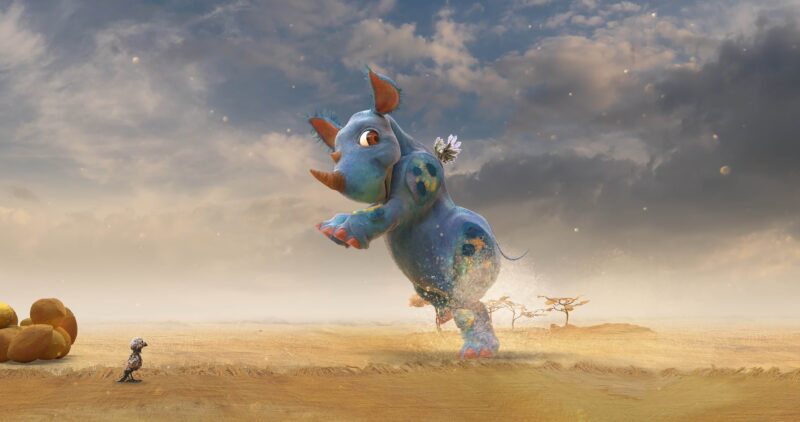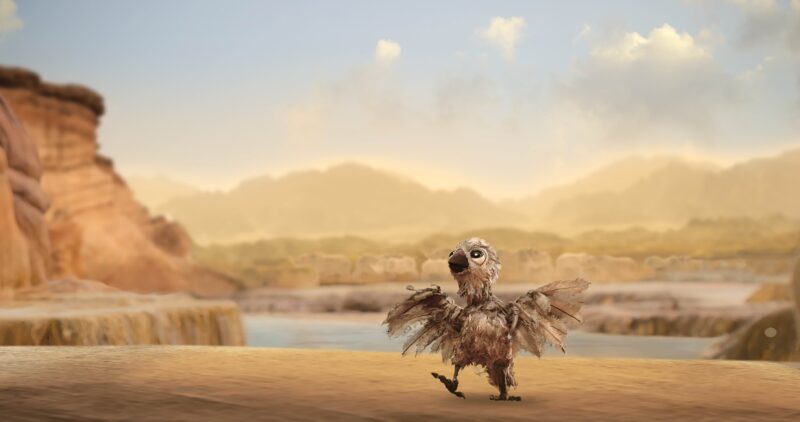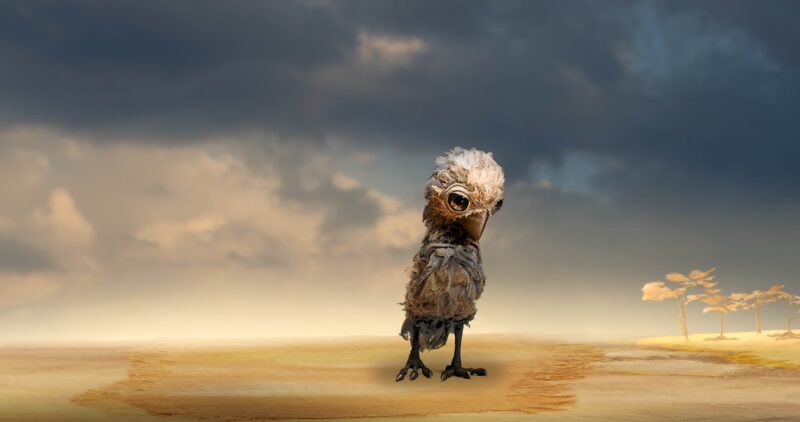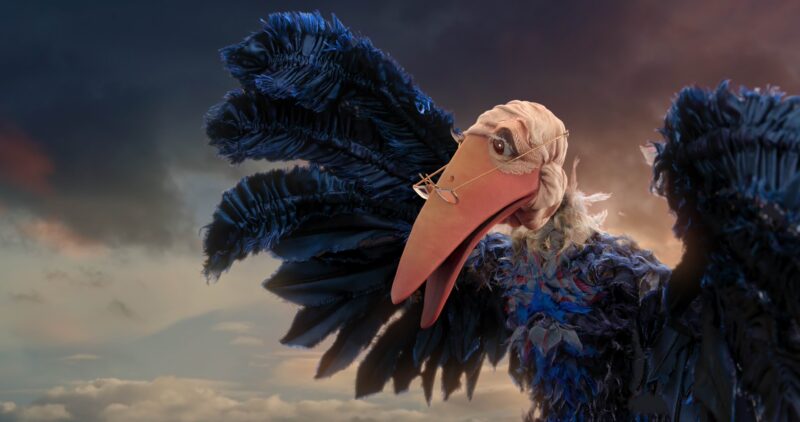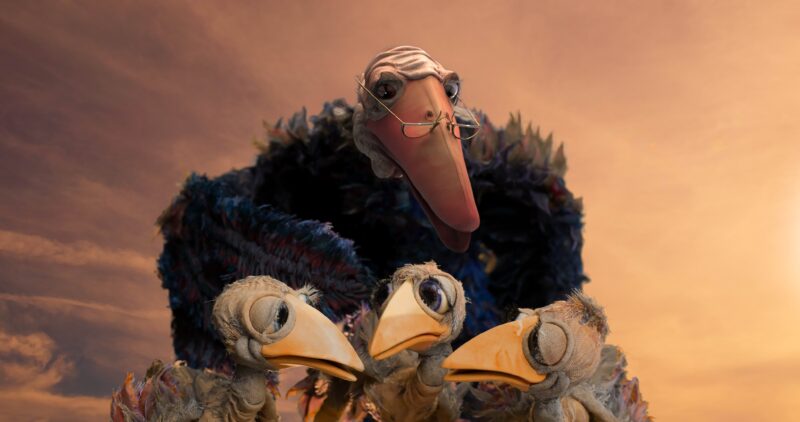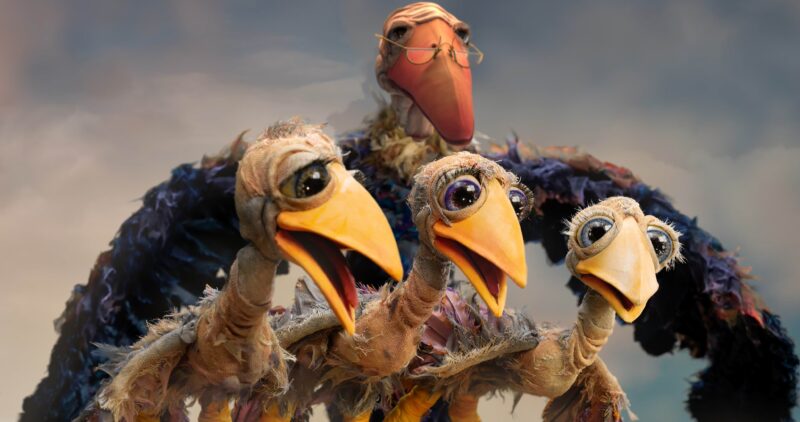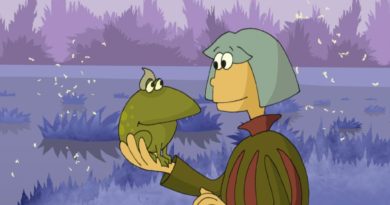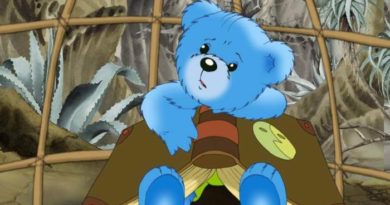A Great Worry
Animated film for children based on a simple and yet wise and funny story written by Leszek Kołakowski, an outstanding Polish philosopher, entitled „Who Would Like to Console One Unlucky Rhino?”
One clever and bumptious Sparrow meets in the savannah a lonely and sad Rhino who wants to fly like birds. The Sparrow, using his experience, urges the Rhino to learn to fly. The attempts end with a spectacular disaster, the biggest SPLASH! in the world after the Rhino falls to a lake, and the mud floods the savannah. The disappointed Rhino cries and sighs with regret, and ashamed and discouraged Sparrow abandons his new friend. The Rhino’s sobs mean that it is always raining, so other animals run away into the savannah. Only the Sparrow who wants to make good the harm he has done suddenly discovers that the Rhinoceros has a feature that makes him unique – a wonderful horn. We watch the story as told by an old and wise Marabou to his chicks in the nest, and the biggest dream of the chicks is to take their first independent flight.
Directed by Zbigniew Kotecki
Screenplay, dialogues: Zbigniew Kotecki, Jan Zamojski
Based on a work by Leszek Kołakowski “Who would like to cheer up an unlucky rhinoceros?”
Scenography: Maria Balcerek
Music composition and performance: Kacper Krupa
Compositing of the film: Zbigniew Kotecki, Janusz Czubak, Maciej Ćwiek, Tomasz Różycki
Editing: Anna Gałązkowska, Janusz Czubak
Sound: Agata Chodyra – Studio Dźwiękownia
Puppet animation: Roos Mattaar, Łukasz Grynda and Piotr Ludwik
Animation 3D: Janusz Martyn, Maciej Włodarczyk, Tomasz Różycki – Reel Production, Piotr Rogowski, Maciej Ćwiek
Animation 2D: Dudek Pulit, Bartosz Zarzycki
Puppet making: Sylwia Nowak – The Puppetmaker
Rigging of puppets: Krzysztof Brzozowski
Making the decorations: Maria Balcerek, Sylweriusz Koperkiewicz, Marcin Jasiński, Marcin Zalewski, Agata Zboromirska
Making the properties: Maria Balcerek, Agata Zboromirska, Agnieszka Niewadził, Jacek Spychalski
Cinematographer of puppet shooting: Zbigniew Kotecki
Clean-up of puppet animation: Tomasz Różycki – Reel Production
Virtual decoration, special image effects: Zbigniew Kotecki
3D models, textures, riggi, shaders: Alchemiq Studio, Tomasz Różycki – Reel Production, Piotr Rogowski
Texturing, tracking, compositing of 3D animations: Maciej Ćwiek
VFX supervisor, compositing 3D: Michał Iwaszko
Compositing, fluid simulations: Jan Szkandera
VFX supervisor: Alan Uran
Sound effects: Agata Chodyra, Szymon Straburzyński
Post-production – colour correction: Fixafilm – Andrzej Łucjanek, Łukasz Ceranka, Monika Mierzwiak, Anna Tomaśko
Dubbing directing: Agnieszka Zwolińska
Dubbing: Marabou – Krzysztof Gosztyła, Rhino- Antoni Scardina, Sparrow – Mateusz Rusin, Aeroplane, Rhinoceros – Michał Konarski, Rhinos, Monkeys – Anna Wodzyńska, Chicks – Matylda Łonicka, Marianna Kłos, Mikołaj Wachowski
Song lyrics: Leszek Kołakowski
Song music: Kacper Krupa
Arrangement, musical director of the song: Paweł Dampc
Performance of the song: Krzysztof Gosztyła, Antoni Scardina
Mix of the song: Piotr Mańkowski
Title sequence: Paweł Prewencki, Dudek Pulit
Master copy: Janusz Czubak – Toto Studio
Production managing: Mariola Olejniczak
Executive producer, script editor: Ewa Sobolewska
Producer, production: TV Studio Filmów Animowanych
Co-producers: Centrum Technologii Audiowizualnych, Telewizja Polska SA, „EC1 Łódź – Miasto Kultury”, Fifne Studio Paweł Prewencki, Serafiński Studio
Co-financed by the Minister of Culture and National Heritage and Polish Film Institute
Date of production: 2023-11-01
Animated film for children, pupped, 3D and 2D animation, colour, 26:00 min., screening format 2K [2048×1080], DCP, stereo 5.1.
All rights reserved © 2023
TV Studio Filmów Animowanych Sp. z o.o., Centrum Technologii Audiowizualnych, Telewizja Polska S.A., Ec1 Łódź, Fifne Studio Paweł Prewencki, Serafiński Studio Sp. z o.o.
A combination of the children’s world of imagination with the gravitas of a philosopher means that the film can be watched by both children and adults, even those with highly refined intellectual tastes. This dichotomy of the work, resulting from the idea behind the narration and from the inherent humour, as well as its potential encouraging deeper reflection led us to selecting this story as the literary basis of our film.
However, setting aside philosophical references, this film is, above all, a tale about:
- a difficult and unusual friendship,
- attempts to turn unrealistic dreams into reality,
- the changing faith in our abilities,
- seeking one’s own identity,
- friendship and empathy,
- the path to self-acceptance,
- the acceptance of diversity in all its guises
But also about:
- the fact that true happiness begins with realising who we are,
- discovering our strengths and weaknesses,
- understanding who we are,
- and about drawing the joy of life from this understanding.
It is also a story about growing up which, from the point of view of the adolescents, is full of all sorts of problems related to our concept of ourselves and who we want to be in our adult life.
Although the main character of our film initially suffers one failure after another, the audience leaves deeply convinced that one should always keep searching and hoping that in the end everybody can find themselves and their place on the earth. This tale entertains and educates, stimulates sensitivity of the young viewer, invites to a discussion, encourages independent reflection.
In this context, the title “A Great Worry” is intended as a means of depicting these particular aspects of growing up, as well as a reason for questioning it thanks to the happy end.
Regardless of any philosophical context, our intention is to create a film story told to children at bed-time. For this reason, the visual side of the film is directed towards “soft and joyful” imaging. It could be compared to a “cuddly toy” from a world populated by characters made of soft fabric, entangled in a story with a deeper message.
ART PROJECTS – MARIA BALCEREK
DESCRIPTION OF THE CHARACTERS
RHINO
Young, worried that he cannot fly and ashamed to admit it. The comic nature of this character is not only due to its anthropomorphism but also to the classic clash of enormous clumsiness and girth with great sensitivity, susceptibility to the suggestions of others, credulity and simplicity. The evolution of the character leads him from the lack of self-acceptance and the resulting sadness to becoming aware, thanks to the Marabou, the Sparrow and other Animals (who also undergo an evolution of their attitudes towards the Rhino) of his own worth and uniqueness. After all, no one has a horn like that of the Rhino.
SPARROW
Tiny, busy, wants to help the Rhino. He turns his dream of flying into reality, which is impossible. In essence, the Sparrow, though outwardly wise, cannot go beyond the circle of his own ideas, realize the reality, and imposes solutions on the Rhino, one of which leads to a catastrophe, although luckily for the Rhino, it does not end tragically. The Sparrow flees when the Rhino falls victim to violence, i.e. when he needs the Sparrow most. The Sparrow is not evil, though. He feels ashamed for running away. The fact that the Rhino still treats him as a friend is one of the reasons for the evolution of this character, from someone who is self-confident, who may even consider himself to be brilliant, who is patronizing, who pushes the Rhino towards the wrong solutions to his problem, to someone who treats the Rhino like a partner, and who gives him reasons for accepting himself for the person he is.
MARABOU
A wise, old bird who looks after the Chicks. His figure and manner of storytelling are associated with an aged intellectual or a professor. He is good, he never raises his voice, although he is somewhat absent-minded. He brings the Chicks up in such a way that they draw conclusions themselves. The Marabou knows that they have to fly out of the nest because that is the way of things, but he wants to delay this moment and protect them from dangers resulting from false ideas about themselves or from submitting easily to someone else’s authority. The Chicks, however, set off on their first flight as a result of the fate of the Rhino, who had succumbed to the authority of the Sparrow. There is a certain paradox here. The Marabou is aware of this and his way of reaching his audience evolves, from the traditional tale to a positive rap calling for helping the Rhino.
A GREAT WORRY – SONG
Song lyrics by Leszek Kołakowski
The Rhino is anxious.
Who will comfort the Rhino?
Let us all hold hands.
And let’s sing the chorus!
Rhino, cry no more!
Rhino, cheer up!
Rhino, cry no more!
Rhino, cheer up!
Even if you don’t have wings
You don’t have to be ashamed at all.
It would only be a shame,
If you were to shed off the horn on your nose.
Rhino, cry no more!
Rhino, cheer up!
Rhino, cry no more!
Rhino, cheer up!
You can impale the moon on the horn,
Rip up the sky, tear up the earth,
With your nose you can smell the pumpkin,
Spear it with the horn, then take a bite.
Rhino, cry no more!
Rhino, cheer up!
Rhino, cry no more!
Rhino, cheer up!
You don’t need to worry so much!
The Sparrow flies, you have the horn!
Just try it and you will see,
What you could do with your horn!
Rhino, cry no more!
Rhino, cheer up!
Rhino, cry no more!
Rhino, cheer up!
Rhino, don’t cry.
Cheer up!
Rhino, don’t cry.
Cheer up!
